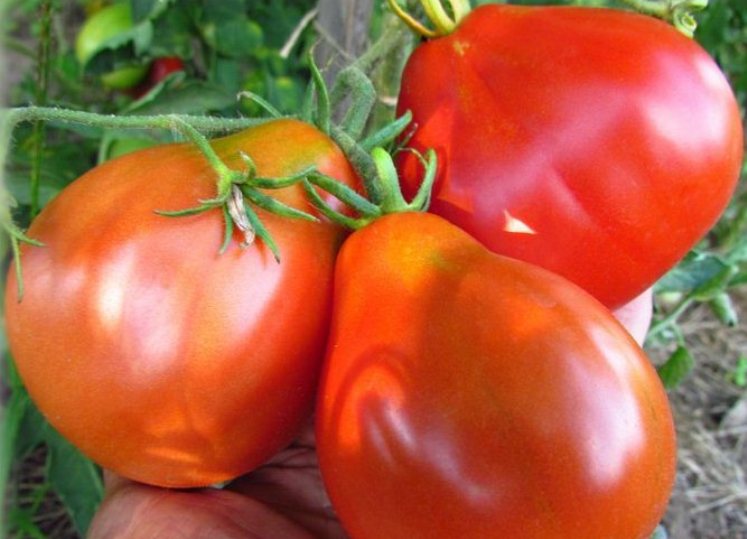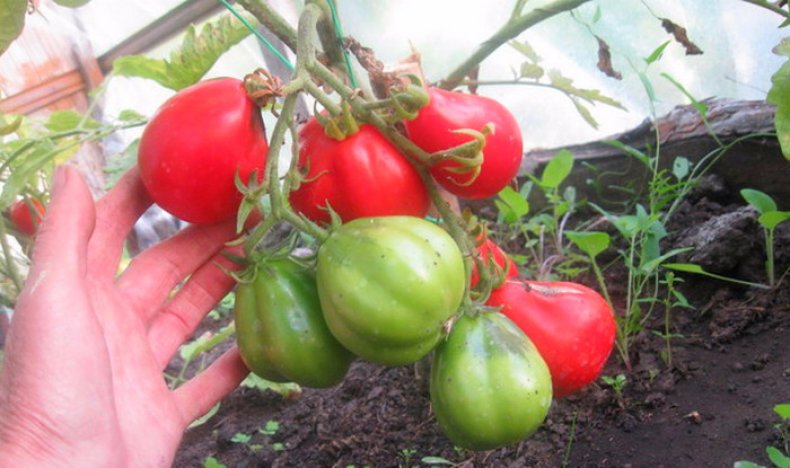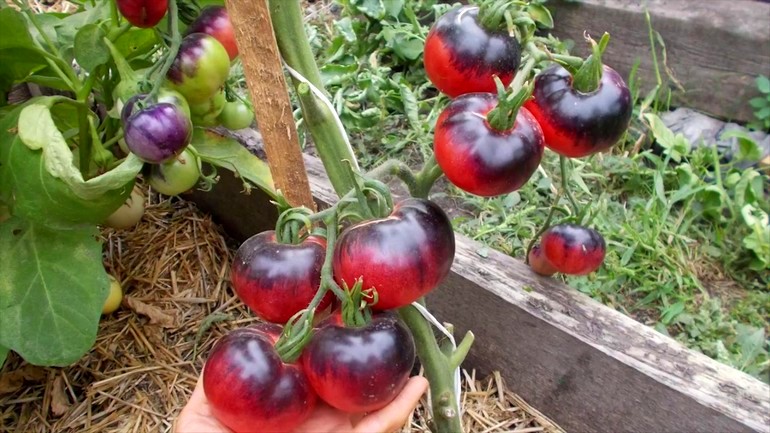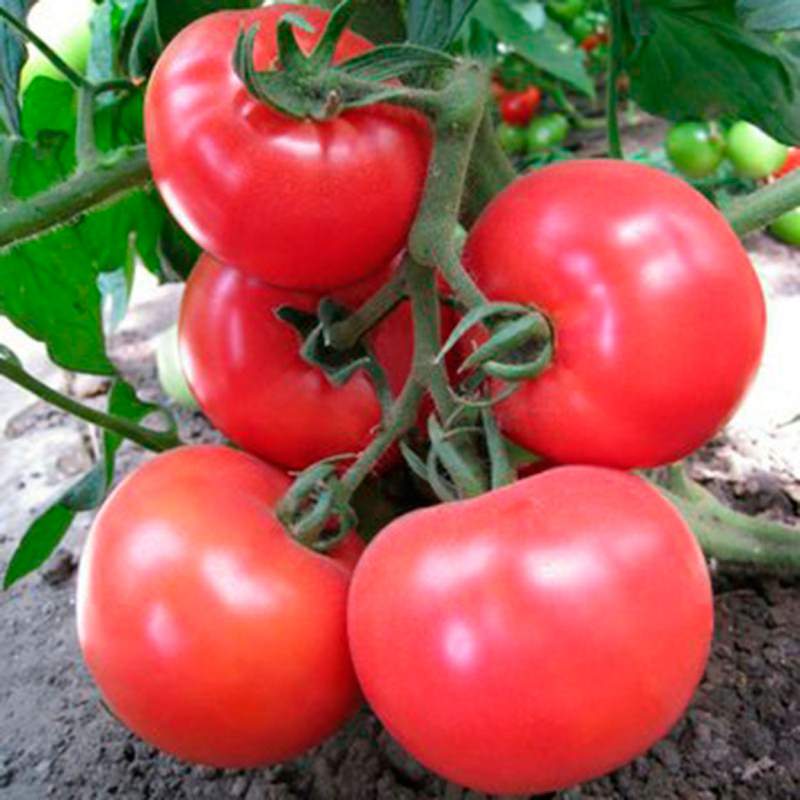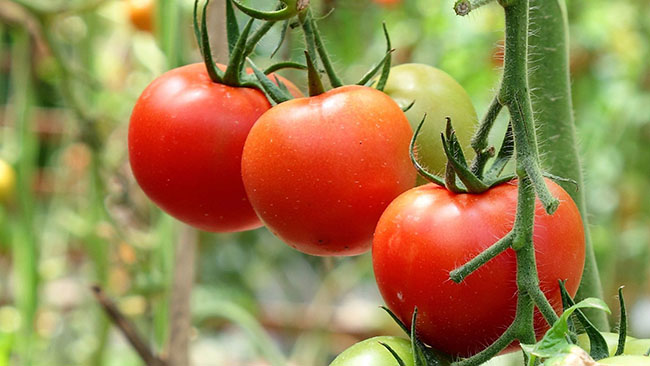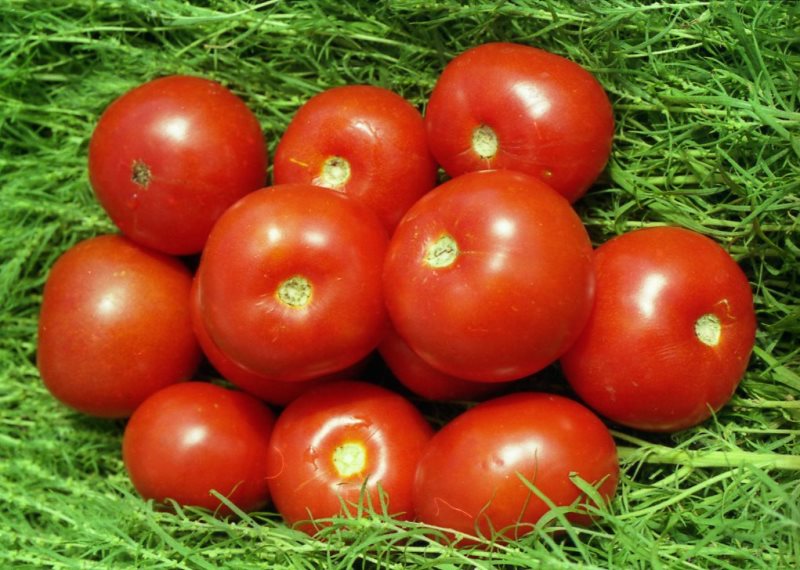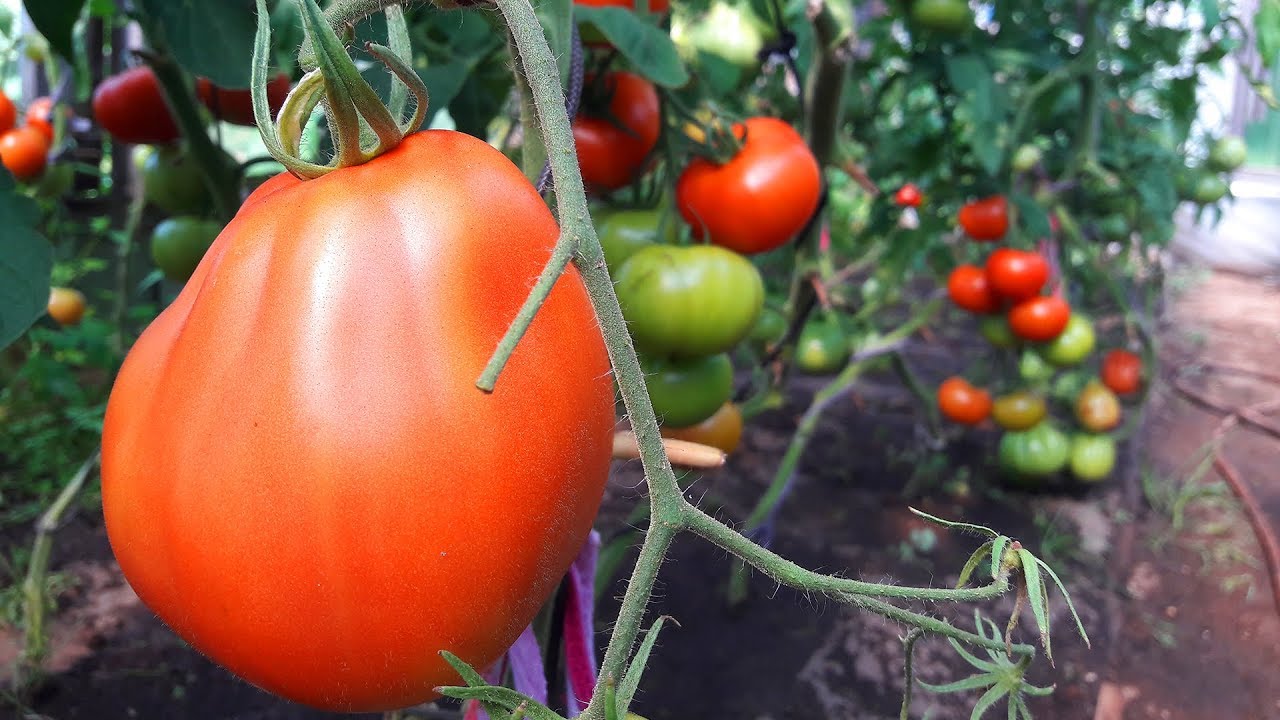Content:
The exquisite name for the Japanese truffle tomato is due to its external characteristics and taste. Currently, this type of tomato is little known among avid gardeners. He appeared on store shelves relatively recently. However, the Japanese truffle tomato, thanks to its characteristics and description of the variety, is gradually gaining high popularity among farmers.
This variety was bred in a selective way, thanks to the painstaking work of scientists. Tomatoes combine the characteristics of popular tomato subspecies, which is why they have many positive qualities.
Description of the variety
Truffle is classified as an indeterminate variety due to the fact that its stem grows continuously, under favorable conditions it can reach 2 m in length. Despite the large size of the bushes, the crop yield is low - one tomato bush can bear up to 4 kg of fruit.
Refers to a mid-season species. From the time of planting the seeds to harvest, on average, it takes about 3.5-4 months. This tomato variety is very disease-resistant, and insects are also not afraid of it.
The Japanese truffle is a thermophilic plant, so warm climates are best suited for it. In the northern regions of the Russian Federation, it is preferable to grow it in greenhouses for more intensive growth and fruiting.
Tomato is quite whimsical to care for, in addition to stable warm weather, it needs frequent attention. For the stability of the bush and a good harvest, the stems are periodically tied up, and pinching is also used. Up to 5 shoots are formed on the stem, about 6 tomatoes appear on each of them. Tomatoes grow in an elongated shape, their weight reaches 200 grams. Because of their weight, tomatoes can break the brushes, so they also need to be tied up.
Types of tomatoes
The Japanese truffle comes in four varieties. Depending on taste preferences, as well as some external features and ripening period, one or another subspecies can be selected.
Tomato Truffle red characteristic and description of the variety
Comes from Siberian tomato species, respectively, it grows well not only in the south, but also in the central and northern parts of the Russian Federation. Red Truffle Tomatoes are glossy, bright red, with a brownish tint. They taste sweet, with a slight sourness. Perfect for canning, making salads.
Tomato Truffle black
Despite its name, the color of the fruit is brown rather than black. The taste is refined, resembling a pear in shape, like other subspecies. Ripens earlier than other tomatoes, the bushes are very dense, the leaves are dark.
Truffle pink tomato
It is a newcomer to the Japanese truffle family. The color of the tomato is raspberry, the taste is sweetish. Quite popular among gardeners, due to its unpretentiousness and taste.
Tomato Truffle yellow (gold)
It fully justifies its name - it resembles real gold in its sweet taste and bright yellow color with a golden sheen.The stem height reaches 1.7 m, which is slightly higher than other species.
Japanese truffle orange
By all descriptions it is similar to a "golden" truffle, but the color is deeper, rich, sunny orange.
Growing tomato
Tomato Japanese truffle is desirable to grow in 1-2 stems. When pinching, leave about 6 stems, and until fully ripe - only 3. Due to the fact that the tomato is very thermophilic, it is most effective to grow it in greenhouse conditions. So the harvest will be much more abundant than in the open field.
It is better to start planting seeds for seedlings in late March or early April. It is necessary to plant a tomato in the ground at the end of May, when the ground warms up, and the air temperature will be favorable for the tomato, and the risk of frost at night will be excluded. A week before planting seedlings, the soil must be fertilized with a mixture of potassium and phosphorus. In the event that the ground has not warmed up enough, it is recommended to cover the beds for planting tomatoes with plastic wrap for several days. The depth of the holes should not be less than 20-25 centimeters, so as not to damage the root system.
If tomatoes are planted in a greenhouse, then they start a couple of weeks earlier, in early May. Seedlings are planted in the ground at a distance of 40 cm from each other, otherwise, with the growth of the bushes, they will become cramped, there is little air and there will not be enough sunlight.
It is advisable to carry out grazing often, as new shoots begin to grow. Watering this tomato variety, like other varieties, must be measured, because tomatoes do not need constant moisture. It is best to stand the water before use so that it is not cold.
As weeds appear, they must be removed. The soil needs periodic loosening, it is done carefully, without touching the roots. Tomatoes need nutrients, so it is recommended to fertilize the soil.
Diseases of tomato
Despite the fact that Truffle is highly resistant to the effects of various pathogens, it cannot be protected from absolutely all diseases. Accordingly, it is necessary to ensure that the stems, brushes and leaves are healthy, without any signs of disease.
In case of detection of such an unpleasant disease as phomosis, namely, brown spots with a black mass of tiny mushroom bodies on the leaves, it is recommended to immediately remove them along with the infected tomatoes. For spraying the branches from the disease, the Hom fungicide is considered effective.
Dry spots may sometimes appear on the Truffle, this problem begins immediately the next day after transplanting seedlings into open ground from a greenhouse or boxes. The affected leaves begin to gradually dry out and fall off. Such drugs as "Tattu", "Consento", "Antracol" will help to cure the diseased plant. After processing the vegetable plant, it is recommended to fix the result by spraying the tomatoes with soapy water.
Pros and cons of tomato
Truffle tomatoes have the main advantage - they are delicious taste. Sweet and tender, they have already conquered many gardeners with their taste. The density of the pulp is well suited for preservation and long-distance transportation. They are highly resistant to disease.
The negative feature of this variety is its low yield, as well as excessive demand for careful care throughout the entire period of growth and ripening. Because of their high density, tomatoes are not suitable for making tomato juices.
With the right approach to growing and caring for Japanese truffle tomatoes, every gardener will be happy with the result. The harvest, albeit not plentiful, but with good taste. Before you start planting seeds, it is recommended to carefully study all types of Truffles. After all, each of them has its own characteristics, both in color and in taste.
In addition to the fact that the truffle must be periodically tied up, pruned, it also needs timely feeding, with the introduction of mineral fertilizers. Top dressing is carried out by applying to the soil or by spraying tomato bushes.
